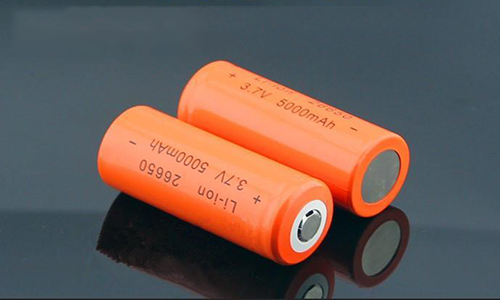Lithium Battery Charge Controller – Definition and Usage
Mar 31, 2020 Pageview:1318
Lithium batteries are an excellent power source to this generation and have been that way for decades. They are well known for their high energy densities but still need protection and appropriate handling because they can turn out to be dangerous.
What is a lithium battery charge controller?
Firstly, a charge controller is a vital part of any power system that is used to charge batteries. It doesn’t matter whether the power source uses solar energy, fuel, wind energy, or even the utility grid, they all have charge controllers. The main function of these controllers is to keep the batteries charged appropriately and safe for use. As such, a lithium battery charge controller is a protective measure installed in lithium batteries that monitors the battery during charging and prevents any misbehavior within the process.
Other typical functions of the charge controller include blocking reverse current and preventing the battery from overcharging. It can even prevent over discharging of the cells as well as protect the battery from overloads that cause shorts. The following are some of the function of these charge controllers explained in detail:
1.Preventing overcharging
When a battery that is being charged, reaches its full capacity, it will be unable to store any more energy supplied to it. If the energy is continuously being supplied at its full rate even when the cells are fully charged, the voltage may increase and become unstable. The excess voltage may strain the cells and this might increase the pressure within them.
The chemicals in a lithium battery are highly reactive and when pressure builds up within the cells, they become unstable and react vigorously. This can cause the gases produced inside the cells to ignite raising the temperatures and causing the battery to catch flames and even explode. What the lithium battery charge controller actually does is reduce the flow of energy to the cells once they reach its peak voltage. When the voltage drops due to usage, the charge controller allows the maximum energy to pass through and charge the battery.
These lithium battery charge controllers can either regulate the flow of energy to the cells by turning the current on/ off, or, reduce the current gradually. All in all, the battery is protected from cases of overcharging which can largely damage the cells.
2.Control and monitor set points vs. the temperature
Set points can be referred to as the various voltages at which the lithium battery charge controller changes the charge rate. The most suitable voltage set points necessary for charge control vary depending on the battery’s temperature. If the controller happens to sense low battery temperature, it tends to raise the set points. On the other hand, when the charge controller notices a drop in the battery temperature, it raises the set points.
Some battery charge controllers come preinstalled with inbuilt temperature sensors. These charge controllers need to be placed in a spot where the battery is sensitive to temperature. However, the better charge controllers tend to contain a remote temperature probe in a fairy small cable. The probe is usually directly attached to the lithium battery in order to give actual temperature readings to the designated controller.
3.Protection against overload
A battery circuit is said to be overloaded when the current flowing through it is higher than it can safely accommodate. Such an instance can cause a condition known as thermal runaway that make the battery overheat and even burst into flames. An overload is usually caused by a fault in the wiring or when using the cells to power a damaged appliance. As such, some lithium battery charge controllers contain an overload protection built in them. These prevent excess current from flowing into the cells and raising the voltage thus making the battery a danger hazard.
4.Low voltage disconnect
Lithium batteries are designed to be discharged by a larger percentage of their capacity which is about 80%. However, if these cells were discharged at 100% they would quickly becomes unstable and eventually, end up being damaged. Take a torch for example. When you use new batteries n a torch, the brightness is always good and efficient. With time however, the brightness tend to fade and become dim because the cells lose their capacity.
If you were to wait until the light from the torch is dim without taking any action, the cells would have been damaged by then. The capacity as well as the lifespan of the battery is usually reduced by a small amount. When you let the battery stay in this discharged state for extended periods, it will quickly deteriorate at a faster rate. Disconnecting the loads may be the most effective way to prevent over discharge when all the other means fail. You would then have to reconnect the loads after the batteries have had enough charge.
At a low voltage the battery charge controller disconnects the loads at that set point and would only reconnect then when the voltage is back to normal.
How do you use a lithium battery charge controller?
Charge controllers is a vital element of any power system and therefore, one only needs to buy a power system that comes preinstalled with it to use it. Others you need to buy separate and attach to the battery but shouldn’t be expensive in relation to the total battery cost.
How do you test your battery charge controller?
Many individuals have been wondering how they can know if a battery charge controller is functioning normally or malfunctioning. To do this, one would need to monitor their voltmeter as the batteries approach full charge during the charging process. You can then check if the voltage is reaching, but not exceeding, the right set points for the lithium battery. Be keen on the signs you notice such as overheating. Also, check to see whether or not you’re getting the expected capacity from the battery. In case you aren’t, then the lithium battery charge controller definitely has a problem.
Conclusion
Most battery manufacturers are keen on controlling the charging of their cells and thus specify the various requirements for voltage regulation. You should find a good charge controller for the safety of your power system and lithium battery.
Leave Message
Hottest Categories
-
Hottest Industry News
-
Latest Industry News














